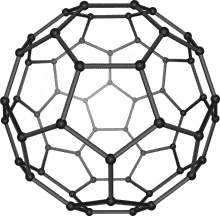
It was only a few decades ago that scientists first discovered with great fascination the curious properties of some molecules that emit electrons when exposed to electric fields and certain wavelengths of light. But it wasn’t until recently that an international team of researchers, including those from the University of Tokyo’s Institute for Solid State Physics, uncovered the remarkable potential of a tiny molecule called fullerene.
The researchers made a huge breakthrough that could be a game-changer in all tech industries by using fullerene to make a switch from a single molecule. The switching speed is insane, almost a million times faster than a classical computer.
This development could pave the way for the creation of computers beyond what is currently possible with electronic transistors. It could also lead to significant improvements in microscopic imaging, enabling researchers to scrutinize the physical world in unprecedented detail.
Understanding the amazing fullerene molecule

Deep in the heart of the carbon kingdom lies a molecule like no other — fullerene. Named after the visionary architect R. Buckminster Fuller, who designed geodesic domes, this molecule is a marvel of symmetry and strength.
Fullerene is a unique form of carbon, composed of 60 carbon atoms arranged in a perfectly symmetrical sphere, resembling a soccer ball. It was first discovered in 1985 by Harry Kroto, Robert Curl, and Richard Smalley, who were awarded the Nobel Prize in Chemistry for their groundbreaking discovery.
This molecule’s unique structure makes it incredibly stable and resistant to breaking down, even at high temperatures and pressures. But fullerene also has remarkable electrical and optical properties.
Researchers have now found that the molecule can act as a switch, similar to a transistor, and can redirect electrons in a predictable way. This process can be much faster than switches in microchips, depending on the laser pulses used.
When the fullerene molecule is placed on a metal point like the end of a pin, it can direct electrons in a specific and predictable way, making it the perfect candidate for a switch. Fast laser pulses on the scale of femtoseconds (10-15 of a second) or attoseconds are focused on the fullerene molecules to trigger the emission of electrons.
This is the first time laser light has been used to control the emission of electrons from a molecule in this way. The team of scientists used a theoretical analysis to predict how the emission of electrons from excited molecules of fullerene should behave when exposed to specific kinds of laser light, and when testing their predictions, they found they were correct.
The Switching Process

According to Project Researcher Hirofumi Yanagisawa, the switching process is similar to the switching points on a train track or an electronic transistor, only much faster. Depending on the pulse of light, the electron can either remain on its default course or be redirected in a predictable way.
Moreover, if the laser is tuned to coax the fullerene molecule to switch in multiple ways at the same time, it could be like having multiple microscopic transistors in a single molecule. That could increase the complexity of a system without increasing its physical size.
Apart from its use as a switch in computing, the fullerene molecule could also improve our ability to scrutinize the physical world itself. Yanagisawa adds that this technique is similar to the way a photoelectron emission microscope produces images. However, those can achieve resolutions at best around 10 nanometers. The fullerene switch enhances this and allows for resolutions of around 300 picometers, which is three-hundred-trillionths of a meter.
But before we all get too excited, although this development is groundbreaking, it’s still in its infancy. There are several hurdles to overcome, such as how to miniaturize the laser component. It could be years before fullerene switch-based smartphones, computers, and optical devices are developed — if ever.
Journal Reference: Hirofumi Yanagisawa, Markus Bohn, Hirotaka Kitoh-Nishioka, Florian Goschin, and Matthias F. Kling, Light-induced subnanometric modulation of a single-molecule electron source, Physical Review Letters: March 8, 2023, doi:10.1103/PhysRevLett.130.106204



